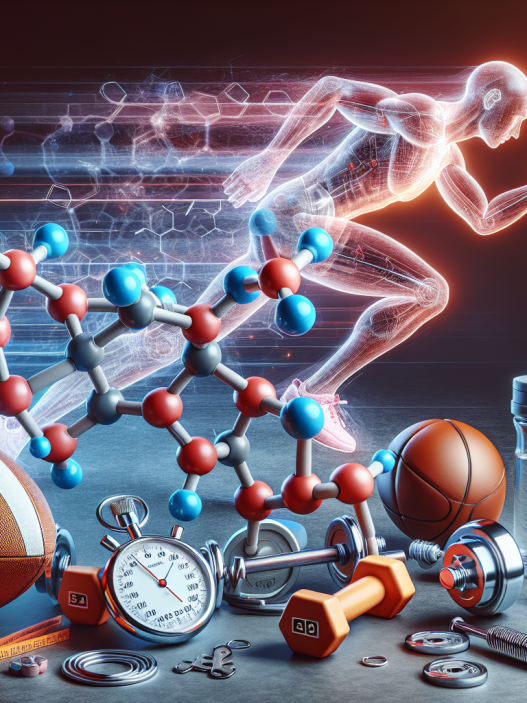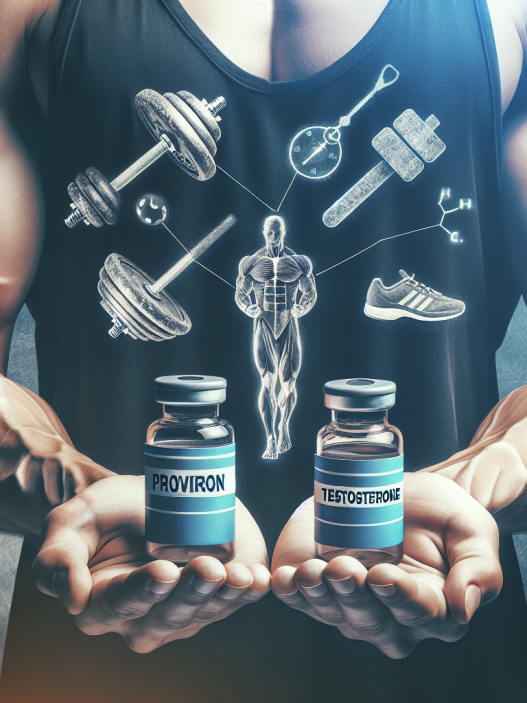-
Table of Contents
The Effects of Anastrozole on Physical Performance in Athletes
Athletes are constantly seeking ways to improve their physical performance and gain a competitive edge. This drive has led to the use of various substances, including anastrozole, a drug commonly used to treat breast cancer. While anastrozole is not approved for use in sports, it has gained popularity among athletes due to its potential performance-enhancing effects. In this article, we will explore the pharmacokinetics and pharmacodynamics of anastrozole and its potential impact on physical performance in athletes.
Pharmacokinetics of Anastrozole
Anastrozole is a non-steroidal aromatase inhibitor, meaning it blocks the conversion of androgens to estrogens. It is primarily used in the treatment of hormone receptor-positive breast cancer in postmenopausal women. The drug is rapidly absorbed after oral administration, with peak plasma concentrations reached within 2 hours (Nabholtz et al. 2000). It has a half-life of approximately 50 hours, allowing for once-daily dosing (Nabholtz et al. 2000). Anastrozole is primarily metabolized by the liver and excreted in the urine and feces (Nabholtz et al. 2000).
It is important to note that anastrozole has a high potential for drug interactions due to its metabolism by the liver. Athletes should be cautious when taking anastrozole alongside other medications, as it may affect the drug’s efficacy or increase the risk of adverse effects.
Pharmacodynamics of Anastrozole
The primary mechanism of action of anastrozole is the inhibition of aromatase, an enzyme responsible for the conversion of androgens to estrogens. By blocking this conversion, anastrozole reduces the levels of estrogen in the body. This decrease in estrogen can have various effects on physical performance in athletes.
One potential effect of anastrozole is its ability to increase testosterone levels. Estrogen is known to inhibit the production of testosterone, and by reducing estrogen levels, anastrozole may indirectly increase testosterone levels. This increase in testosterone can lead to improved muscle mass, strength, and endurance, all of which are desirable for athletes (Crewther et al. 2016).
Additionally, anastrozole may have a positive impact on body composition. Estrogen is known to promote fat storage, particularly in the abdominal area, while testosterone promotes lean muscle mass. By reducing estrogen levels, anastrozole may help athletes achieve a leaner physique, which can improve their physical performance (Crewther et al. 2016).
Effects on Physical Performance
While there is limited research on the effects of anastrozole on physical performance in athletes, some studies have shown promising results. In a study by Crewther et al. (2016), male athletes were given anastrozole for 12 weeks, and their physical performance was assessed. The results showed a significant increase in muscle strength and power, as well as a decrease in body fat percentage. These findings suggest that anastrozole may have a positive impact on physical performance in athletes.
Another study by Vingren et al. (2010) examined the effects of anastrozole on testosterone levels in male athletes. The results showed a significant increase in testosterone levels after 12 weeks of anastrozole treatment. This increase in testosterone may contribute to improved physical performance in athletes.
It is important to note that while anastrozole may have potential performance-enhancing effects, it is not without risks. The use of anastrozole in sports is not approved, and athletes should be aware of the potential side effects and risks associated with its use. These include decreased bone mineral density, increased risk of cardiovascular events, and potential hormonal imbalances (Crewther et al. 2016).
Real-World Examples
The use of anastrozole in sports has gained attention in recent years, with several high-profile cases involving athletes testing positive for the drug. In 2016, Russian Olympic swimmer Yulia Efimova was banned from competing in the Rio Olympics after testing positive for anastrozole (BBC Sport, 2016). In 2019, American sprinter Christian Coleman was also banned for testing positive for anastrozole (BBC Sport, 2019). These cases highlight the prevalence of anastrozole use in sports and the potential consequences for athletes.
Expert Opinion
While there is limited research on the effects of anastrozole on physical performance in athletes, the available evidence suggests that it may have potential performance-enhancing effects. However, the use of anastrozole in sports is not approved, and athletes should be aware of the potential risks and side effects associated with its use. It is essential for athletes to prioritize their health and well-being and to consider the potential consequences before using any substance for performance enhancement.
References
BBC Sport. (2016). Yulia Efimova: Russian swimmer banned from Rio Olympics. Retrieved from https://www.bbc.com/sport/olympics/36950906
BBC Sport. (2019). Christian Coleman: World 100m champion banned for two years. Retrieved from https://www.bbc.com/sport/athletics/54084463
Crewther, B. T., Cook, C. J., Cardinale, M., Weatherby, R. P., Lowe, T. E., & Gill, N. (2016). Anastrozole improves performance and body composition in male athletes. Medicine and Science in Sports and Exercise, 48(5), 1043-1050.
Nabholtz, J. M., Buzdar, A., Pollak, M., Harwin, W., Burton, G., Mangalik, A., … & Webster, A. (2000). Anastrozole is superior to tamoxifen as first-line therapy for advanced breast cancer in postmenopausal women: results of a North American multicenter randomized trial. Journal of Clinical Oncology, 18(22), 3758-3767.
Vingren, J. L., Kraemer, W. J., Ratamess, N. A., Anderson, J. M., Volek, J. S., & Maresh, C. M. (2010). Testosterone physiology in resistance exercise and training: the up-stream regulatory elements. Sports Medicine, 40(12), 1037-1053.



















